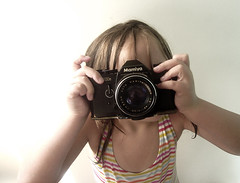The Hour of Code is coming!! Get your students ready!
Did you know that the week of December 8 - 14, is Computer Science Education Week? Unfortunately our EC&I 831 class will be finished, so we will not be able to explore how we are getting students involved, but perhaps it's still worthwhile to share some ideas on how to bring code to the classroom.
So What is the Global Hour of Code?
The Global Hour of Code apparently is actually one of the largest events in history. The video above is very American oriented, so I found more information for Canada Learns Coding. The premise of the Global Hour of Code is that "if you can learn how to make technology you can change the world". The idea is to promote the fundamentals of computer science for learners of all ages. If you check out the code.org site, you can see the links for different ages. It's not just something that is for older students, even students in the primary grades can learn some of the basics. In taking the time to get involved in the Hour of Code, learners of all ages, that's teachers and students, can learn that computer science is fun, easy and accessible.
Why Should Teachers Get Involved?
Perhaps we should look at teaching code as becoming one of the digital literacies that we need to teach to get our students ready for the future. Could coding eventually become as important as teaching writing and reading skills? Could you imagine the outcry of many teachers if this was introduced as being a part of curriculum?
How does this promote creativity, critical and innovative thinking, and problem solving?
In an article from Common Sense Media, "How to Teach Coding in Your Classroom, Even if You're a Novice Yourself", Douglas Rushoff, argues that like reading or math, coding is like a literacy of its own. Rushoff goes on to state:
“When human beings acquired language, we learned not just how to listen but how to speak. When we gained literacy, we learned not just how to read but how to write. And as we move into an increasingly digital reality, we must learn not just how to use programs but how to make them,”
I like how encouraging kids to learn how to code empowers students to become programmers and engineers. All kids, boys and girls. If we hope to truly encourage all kids, particularly girls, we need to look at increasing exposure to skills such as coding. Rushoff also states, "we have embraced the new technologies and literacies of our age without actually learning how they work and work on us". So what are we doing to encourage students to look the impact of technology in their lives? Do we take time to explore with students how technology is impacting the way we interact? Do we explore with students the importance of not only digital citizenship and the ethics of online behaviour, but do we discuss digital etiquette? What are we doing as educators to explore more of the philosophical issues related to online activity and how it's impacting the way we interact?
How Can Teachers Get Involved?
Code.org Sign Up
You can even promote the Hour of Code by printing and putting up these posters in your school.
Tutorials and Sites to Promote Coding
Code.org - Has great activities that can help elementary students explore code.
Canada Learns Coding - This site is Canada's version of Code.org. Same premise, but one of which encourages all involved in Computer Engineering to donate one hour to help teach coding at a school.
Tynker.com - Teachers can create a classroom account for elementary students to get started exploring code. There is an app available with iTunes and Google Play, but it does cost $5.37. Not so affordable if you are buying several apps.
Common Sense Media Teaching Code - Common Sense Media looks at how teachers can approach teaching code, even if they are amateurs themselves.
Microsoft Hour of code Basics - Offers courses such as Kodu, which encourages building games, playing games and sharing games.
Khan Academy Coding Course - For Hour of Code, we've created special introductory curricula to get your students started!























